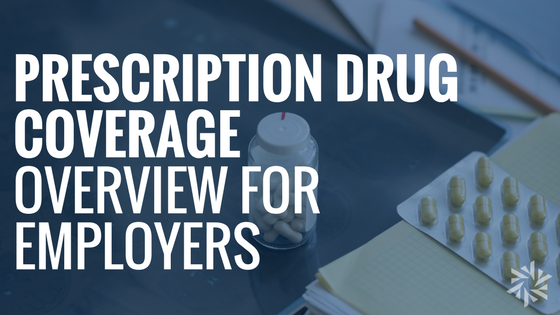
Prescription drugs are one of the most costly elements of employer-sponsored health plans. Help your employees better understand their prescription drug coverage to help lower their cost, stay healthier and receive greater satisfaction from their health plan. Download our Prescription Drug Overview for a quick reference to terminology and frequently asked questions.
TYPES OF PRESCRIPTION DRUGS
Generic Drug
A generic drug is identically equivalent to the brand name drug in form, safety, strength, quality and intended use. Although identical, generic drugs are substantially cheaper than their brand name counterparts and are usually produced by multiple manufacturers.
Formulary or Preferred Brand Drug
A formulary drug is a drug that is listed on a preferred drug list from your insurance carrier. They are drugs that insurance carriers believe to be well suited to treat specific conditions while keeping costs more manageable for both the carrier and the insured individual.
Non-Preferred Brand Drugs
These are brand-name drugs that are not included on the insurance carriers list of preferred drugs. An employee will pay more for non-preferred drugs versus opting for generics and preferred brand drugs.
Specialty Drug
A specialty drug is a high-cost medication used to treat a chronic or complex health condition. These drugs require special handling, administration or monitoring and generally need prior authorization to order them. Specialty drugs are used to treat conditions such as cancer, rheumatoid arthritis, multiple sclerosis, HIV/AIDS, IBD, and Hepatitis C.
Biosimilar Drug
A biosimilar drug is similar to the original patented specialty drug but may not be an exact copy. Currently, there are very limited biosimilar drugs available, however many are expected in the future to help combat rising drug costs. A biosimilar drug is generally 10 to 25 percent cheaper than the original product.

PRESCRIPTION DRUG COVERAGE TERMINOLOGY & FAQs
What is RX drug step therapy?
RX drug step therapy is used by insurance carriers to help control the rising costs of prescription drugs. With step therapy, an employee will be required to try a medication or dosage before stepping up to a drug that costs more.
What is prior authorization?
Prior authorization is when a patient meets certain requirements in order for the specific medication to be covered. If coverage is approved by the insurance carrier, a regular copayment as outlined in the plan design will be required. If the drug is not approved during the authorization, an employee will be required to pay full price for the medication.
What if an employee is prescribed a non-preferred brand drug?
An employee should ask their physician if there is a generic or preferred brand alternative to keep costs down. Often times physicians are unaware of what plans cover specific medications and they may be able to prescribe an alternate medication at a much lower cost to the employee. Remember that only a physician can modify or change a prescription.
Can employees go anywhere to pick up their covered prescriptions?
Just as your group health plan covers specific medications, your health plan also allows specific pharmacies, referred to as “in-network”, for filling prescriptions. You and your employees can check with your insurance provider or contact Austin Benefits Group for help finding in-network pharmacies. Your employees may be able to save even more by using an approved mail-order program for their prescriptions.
Can an employer ask employees what prescription or over-the-counter medications they are taking?
Generally, no. In limited circumstances, particular employers may be able to demonstrate that it is job-related and consistent with business necessity to require employees in specific positions affecting public safety to report when they are taking medication that may affect their ability to perform essential functions. Under these limited circumstances, an employer must be able to demonstrate that an employee’s inability or impaired ability to perform essential functions will result in a direct threat. For example, a police department could require armed officers to report when they are taking medications that may affect their ability to use a firearm or to perform other essential functions of their job. Similarly, an airline could require its pilots to report when they are taking any medications that may impair their ability to fly. A fire department, however, could not require fire department employees who perform only administrative duties to report their use of medications because it is unlikely that it could show that these employees would pose a direct threat as a result of their inability or impaired ability to perform their essential job functions.
For more help with prescription drugs and employee benefits, schedule a consultation with Austin Benefits Group today. Don’t forget to download your free Prescription Drug Overview, a helpful reference to terminology and frequently asked questions.



